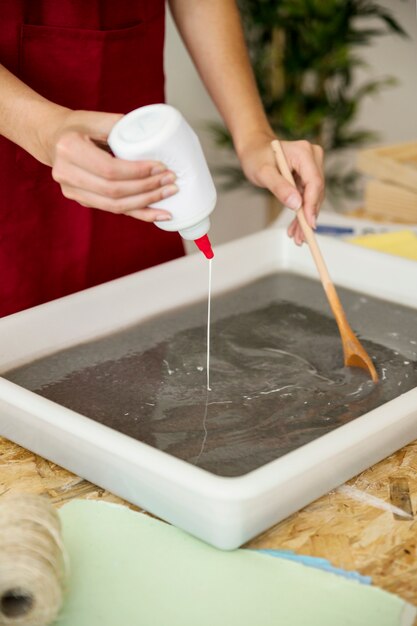
In recent decades, the world’s environmental issues have led people to lean towards natural living. Many now understand the benefits of using natural products over commercial items loaded with chemicals and preservatives. Homemade laundry soap is a significant step in this direction. It saves money and ensures your skin isn’t exposed to the harsh toxins found in commercial detergents, which can cause long-term skin problems, especially for those with sensitive skin.
Making your own laundry soap is simple and requires only a few ingredients. The best part is that these homemade detergents clean your clothes just as well as commercial products, without the high cost and skin irritants. Plus, they don’t contain harmful scents and chemicals that can pose severe health risks, including cancer and neurological diseases.
Commercial laundry products are also harmful to the environment, contaminating air, water, and soil. By switching to DIY products, we can take a proactive step towards a healthier and more sustainable lifestyle for ourselves and the planet.
**Using Laundry Soap**
Using homemade laundry soap is straightforward and similar to using commercial detergents. Here are some tips:
– **Warm Water:** Always use warm water to help the soap dissolve better and clean your clothes more effectively.
– **Grease Stains:** DIY laundry soaps are excellent at removing tough stains like oil, grease, and other fatty substances.
**DIY Laundry Soap Recipe**
Making DIY laundry soap is quick and easy, taking only 15-20 minutes. Here’s what you need:
**Ingredients:**
– 1 Box of Washing Soda
– 1 Box of Borax
– 1 Fels-Naptha Bar
– 1 Bottle of Purex Crystals (optional for fragrance)
**Instructions:**
1. Grate the Fels-Naptha bar into a container.
2. Mix one cup of Borax, one cup of Washing Soda, and half a cup of Purex Crystals in the container.
3. Stir well and store in a cool, dry place.
4. Use two tablespoons per medium load of laundry.
**DIY Liquid Laundry Detergent Recipe**
For those who prefer liquid detergent, this method is also effective and easy to make.
**Ingredients:**
– 1 Cup soap flakes
– 1 Cup Washing soda
– 1 Cup Baking soda
– ½ Cup Borax
– Saucepan, cheese grater, and a large resealable container
**Instructions:**
1. Heat four cups of water in a saucepan and add the soap flakes, stirring until dissolved.
2. Combine the melted soap with one cup of washing soda, one cup of baking soda, and half a cup of Borax with two gallons of hot water in a large container.
3. Stir well, let it sit overnight, and use as needed.
**DIY Gentle Wool Wash Recipe**
Wool garments need special care to maintain their quality. Here’s an easy DIY recipe for a gentle wool wash.
**Ingredients:**
– 4 Cups soap flakes
– 4 Cups boiling water
– 1 Cup denatured alcohol
– 1 Tbsp essential oil (optional)
**Instructions:**
1. Mix soap flakes and boiling water in a large bowl until well blended.
2. Add essential oil and denatured alcohol, then mix well.
3. Pour into a container and let it sit overnight until it forms a jelly.
4. Use a small amount for spot cleaning or dissolve one tablespoon in lukewarm water for larger washes.
**Is Borax Safe?**
Some people worry that borax might be toxic, but it’s actually similar to baking soda in terms of safety. When used in the recommended amounts, borax is safe and effective for DIY laundry detergents. Just make sure not to confuse it with boric acid.
**Benefits of DIY Laundry Soap**
– **Suitable for HE Washers:** DIY detergents have low suds, making them ideal for high-efficiency washers.
– **Cost-Effective:** Homemade detergents are much cheaper than commercial brands.
– **Safe for Septic Systems:** They don’t contain fillers or phosphates, reducing the risk of clogging and harming beneficial septic bacteria.
– **Toxin-Free:** DIY detergents protect your health by avoiding the toxic chemicals found in commercial products.
In conclusion, making your own laundry soap is a simple, cost-effective, and eco-friendly way to clean your clothes and protect your skin and the environment. Why not give it a try?